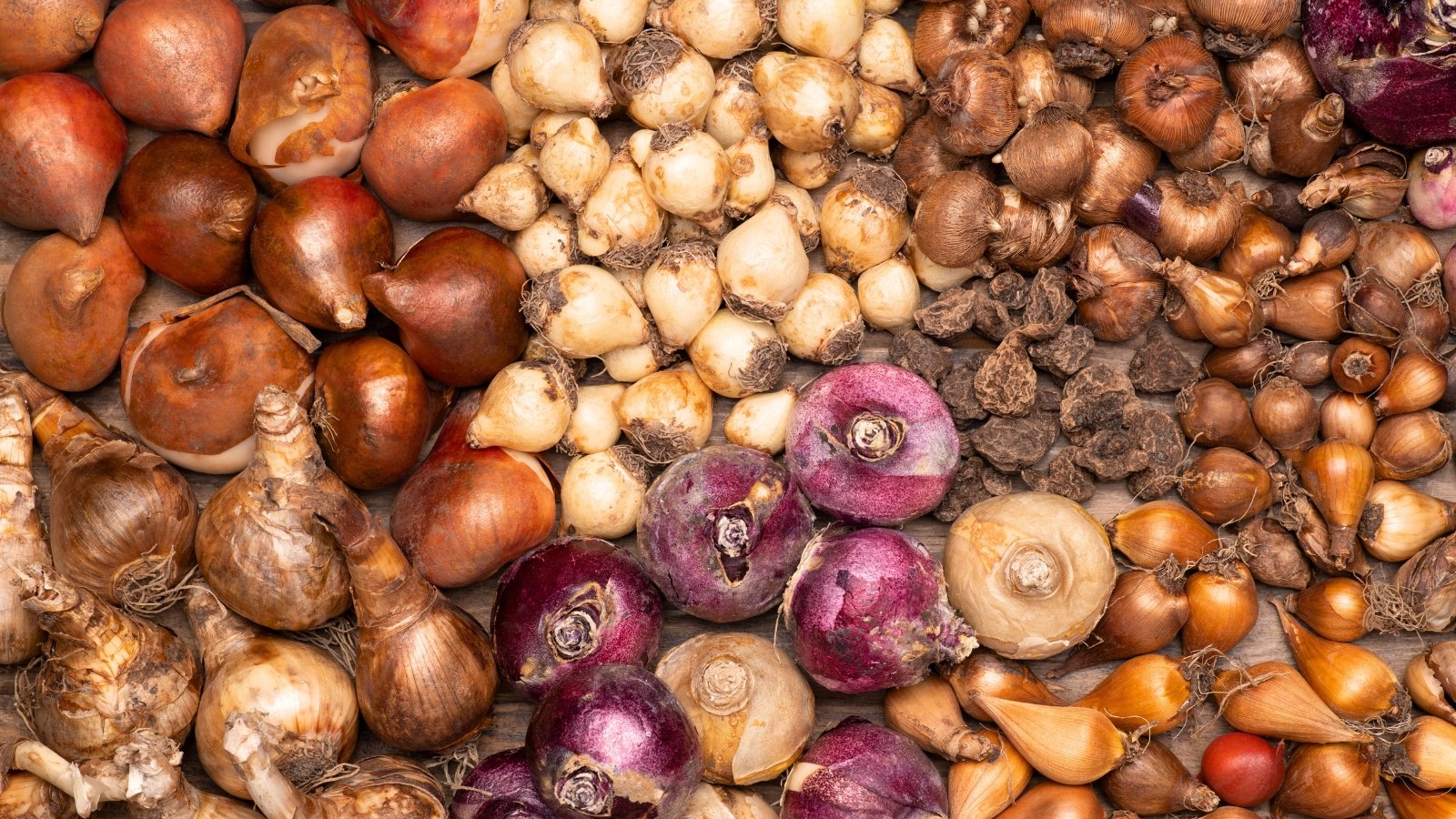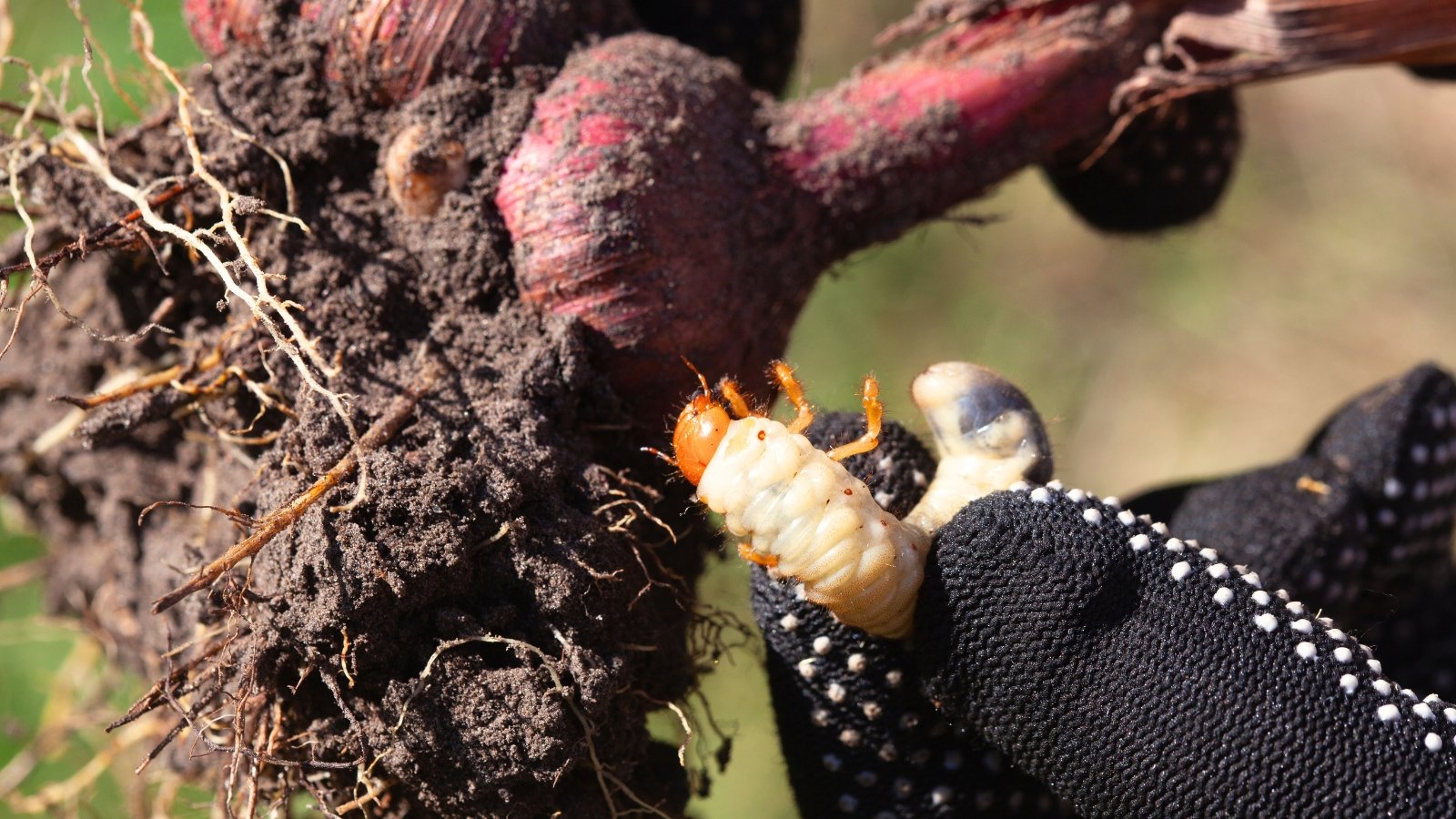PROTECT YOUR DNA WITH QUANTUM TECHNOLOGY
Orgo-Life the new way to the future Advertising by AdpathwayBulbs, rhizomes, and corms are bulbous storage structures that plants use to survive harsh conditions. Whether it’s winter cold or summer heat, bulbs use their protective coverings to keep themselves safe and sound despite the weather.
Two main types of bulb-like plants exist: hardy and tender. Tender species are heat lovers and frost tender, while hardy types require chilly winter temperatures to bloom well in spring. Although it’s easier to grow bulbs if you can leave them in the ground, some gorgeous types are worth the effort of digging them up and storing them.
Some lucky growers can plant both hardy and tender varieties and leave them in the ground! Cool, mild parts of the West Coast and northern regions of Florida are some areas where you can plant begonias and tulips, for example.
Here are the key things to consider in the digging vs. leaving bulbs in the ground debate.
The President Canna Lily

The President Canna Lily Bulbs

Yellow Double Begonia

Yellow Double Begonia Bulbs
7 Considerations
No matter where you live and garden, think of these seven considerations before digging up your bulbs or leaving them in the ground.
Bulb Type
 Know your underground type before deciding what to do.
Know your underground type before deciding what to do.Different bulbs require different care routines. Use this chart to locate your favorite species and see if they’re hardy or tender. Some of these plants aren’t true bulbs, as they grow tubers, corms, or rhizomes. We refer to them as bulbs commonly because they resemble true bulb species, like lilies and daffodils.
| Hardy Bulbs | Tender Bulbs |
| Crocus | Amaryllis |
| Daffodil | Begonia |
| Hyacinth | Canna Lily |
| Iris | Dahlia |
| Snowdrop | Gladiolus |
| Tulip | Ranunculus |
Each species has different tolerance levels for heat and cold. Tender bulbs are frost-tender, but some may survive mild winters in zones 7 and above. Knowing what types you’re growing and what they prefer will help you decide if you should leave them in the soil or dig them up.
The Climate
 Winter lows quietly decide which bulbs stay and which move.
Winter lows quietly decide which bulbs stay and which move.Your local climate is the ultimate deciding consideration. Growers in zones 8 through 10 may grow a mix of tender and hardy bulbs and leave them underground, while growers in zones 7 and below must dig up tender species and store them for the winter.
Gardeners in zones 10 and above, and sometimes zone 9, will have to dig up hardy bulbs in the fall and store them in the fridge for the winter. These techniques allow you to trick the flowering plants by giving them the conditions they need to thrive.
Knowing how cold it gets in the winter is a crucial detail for making decisions about digging vs. leaving bulbs in the ground. Your hardiness zone tells you how cold it gets, on average, in the wintertime. Mild climates lack frosty weather in winter, while cold climates receive recurring frosts. You’ll have to dig up tender bulbs in cold climates, and, vice versa, hardy ones in mild climates.
The Yard
 Surprise freezes hit containers harder than garden soil ever could.
Surprise freezes hit containers harder than garden soil ever could.How you garden and where you grow these bulbous plants are two other key considerations. Potted plants are subject to colder temperatures in winter and hotter temperatures in summer than those in the ground. The same is true for those in raised beds, planters, and tall mounds.
Canna lilies, though hardy underground in zone 8, may die in the winter if they’re growing in containers. Freezing temperatures penetrate the pots and reach the bulbous, underground portions of the plants.
It’s best to dig up and store tender species if they grow in containers or beds in a region with marginally mild winters. Surprise frosts can, and will, kill tender plants! Keep your flowers safe and sound by planting them in spring instead of risking their lives.
Room for Storage
 Tender bulbs need just the right chill to wake up.
Tender bulbs need just the right chill to wake up.Not all of us gardeners have root cellars and pantries! If you lack the proper storage conditions for your plants, you may want to consider leaving them in the ground and mulching them during the cold months. Tender bulbs need cool, dark, and dry conditions to survive the dormant period indoors.
Possible storage areas for tender species include pantries, cellars, unheated garages, and little-used drawers. Pack them in straw or chips, and keep them dry but not bone dry.
Growers in mild climates must store their bulbs in the refrigerator. Each type has a different chilling period requirement. Chill them for however long they need cold temperatures, then take them out and plant them after the period is over.
The Growing Site
 A sunnier spot might be all they really need.
A sunnier spot might be all they really need.Another reason you’d want to dig out these plants is if they’re suffering in their current location. Weak and bloomless specimens will grow better if you dig them up and move them to a more suitable location. Shade, poor soil, and pests or diseases can create less-than-ideal growing conditions.
Instead of digging and storing these plants, you may replant them in a better location if they’re perennial in your region. If they’re not perennial and require storing indoors, dig them up after they enter dormancy, when their stems and leaves fade from green to brown. Then, next year, plant them in an area that suits their needs.
Pests
 When roots rot early, sneaky pests are usually behind it.
When roots rot early, sneaky pests are usually behind it.Pests are a common issue when growing these plants in the ground. Grubs, borers, rats, or similar burrowing pests may target your tuberous flowers. These pests love the nutrients stored in the tubers, corms, and bulbs.
To prevent pests from overtaking your flowers, dig them up and treat them when they’re dormant. If the pest infestation is severe, excavate them before they enter dormancy to treat them promptly.
Soaking is an easy treatment method. Soak your plants in buckets full of water, and watch as the grubs and borers float to the top. Leave them in the buckets for 24 hours, then dispose of all the bugs and remove your bulbous specimens. Plant them in a new location to starve the pests belowground.
Diseases
 Relocating healthy ones helps dodge lingering underground infections.
Relocating healthy ones helps dodge lingering underground infections.Diseases, like pests, can live in the soil and affect hardy or tender bulbs year after year. Dig up your remaining disease-free flowers and move them to a different spot to give them a better chance of survival.
Diseases may take many years to die out in the soil. Some need two or three years, while others need five years or more. Diagnose the disease your plants have; knowing the condition is helpful to know how long the growing site needs before you can plant them there again.
Frequently Asked Questions
Store tender species in a cool, dry, and dark location to keep them happy and healthy. Pack them in crates or buckets with straw, sand, or chips, and keep them dry but not bone dry. Store hardy ones in the fridge for their chill period, then plant them when the period is over.
It depends on the storage conditions, though most will live until they begin emerging after the dormant period. They’ll struggle to sprout blooms and leaves in their crates, and they’ll wither shortly after. Plant them on time to prevent them from dying in storage.
Before storing them, you’ll want to dry, clean, and cure them so they last throughout the cold period. Learn more here.


 4 weeks ago
20
4 weeks ago
20





















 English (US) ·
English (US) ·  French (CA) ·
French (CA) ·